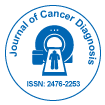Lung Cancer Detection: A Comprehensive Guide
Received Date: Nov 01, 2024 / Accepted Date: Nov 30, 2024 / Published Date: Nov 30, 2024
Abstract
Lung cancer remains one of the leading causes of cancer-related mortality worldwide, with early detection significantly influencing survival rates and treatment outcomes. Despite advances in medical technology, the diagnosis of lung cancer in its early stages is still challenging due to the often asymptomatic nature of the disease in its initial phases. This comprehensive guide explores the various techniques, tools, and methods employed in the detection of lung cancer, ranging from traditional imaging modalities to cutting-edge molecular and genetic technologies. We discuss the role of low-dose computed tomography (LDCT), positron emission tomography (PET) scans, and magnetic resonance imaging (MRI) in detecting lung tumors. The guide also covers advances in biomarker discovery, liquid biopsy, and genetic profiling, which are crucial in identifying at-risk individuals and detecting the disease at molecular levels. The application of artificial intelligence (AI) and machine learning (ML) in improving detection accuracy and screening efficiency is also examined, along with the potential integration of these technologies in clinical practice. We highlight the importance of early detection, screening guidelines, and the ethical considerations surrounding lung cancer diagnosis. This guide provides a comprehensive understanding of the current landscape of lung cancer detection, aiming to equip healthcare professionals, researchers, and patients with the knowledge needed to navigate this complex area of oncology
Keywords: Lung cancer; Early detection; Screening; Low-dose computed tomography (LDCT); Positron emission tomography (PET); Magnetic resonance imaging (MRI); Biomarkers; Liquid biopsy; Genetic profiling; Artificial intelligence (AI); Machine learning (ML); Oncology; tumor detection; Molecular diagnostics; Cancer mortality; Precision medicine; Diagnostic techniques; Lung cancer screening guidelines; Cancer biomarkers; Medical imaging; Molecular oncology
Citation: Sidan W (2024) Lung Cancer Detection: A Comprehensive Guide. J Cancer Diagn 8: 267. Doi: 10.4172/2476-2253.1000267
Copyright: © 2024 Sidan W. This is an open-access article distributed under the terms of the Creative Commons Attribution License, which permits unrestricted use, distribution, and reproduction in any medium, provided the original author and source are credited.
Share This Article
Recommended Journals
Open Access Journals
Article Tools
Article Usage
- Total views: 278
- [From(publication date): 0-0 - Apr 04, 2025]
- Breakdown by view type
- HTML page views: 117
- PDF downloads: 161
